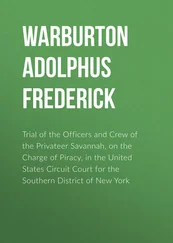A close balance between positive and negative energy is predicted by the modern extension of the big bang theory called the inflationary big bang, according to which the universe underwent a period of rapid, exponential inflation during a tiny fraction of its first second. [37] 6. Alan Guth, The Inflationary Universe (New York: Addison-Wesley, 1997).
The inflationary theory has recently undergone a number of stringent observational tests that would have been sufficient to prove it false. So far, it has successfully passed all these tests.
In short, the existence of matter and energy in the universe did not require the violation of energy conservation at the assumed creation. In fact, the data strongly support the hypothesis that no such miracle occurred. If we regard such a miracle as predicted by the creator hypothesis, then that prediction is not confirmed.
This example also serves to once more refute the assertion that science has nothing to say about God. Suppose our measurement of the mass density of the universe had not turned out to be exactly the value required for a universe to have begun from a state of zero energy. Then we would have had a legitimate, scientific reason to conclude that a miracle, namely, a violation of energy conservation, was needed to bring the universe into being. While this might not conclusively prove the existence of a creator to everyone’s satisfaction, it would certainly be a strong mark in his favor.
Another prediction of the creator hypothesis also fails to be confirmed by the data. If the universe were created, then it should have possessed some degree of order at the creation—the design that was inserted at that point by the Grand Designer. This expectation of order is usually expressed in terms of the second law of thermodynamics, which states that the total entropy or disorder of a closed system must remain constant or increase with time. It would seem to follow that if the universe today is a closed system, it could not always have been so. At some point in the past, order must have been imparted from the outside.
Prior to 1929, this was a strong argument for a miraculous creation. However, in that year astronomer Edwin Hubble reported that the galaxies are moving away from one another at speeds approximately proportional to their distance, indicating that the universe is expanding. This provided the earliest evidence for the big bang. For our purposes, an expanding universe could have started in total chaos and still formed localized order consistent with the second law.
The simplest way to see this is with a (literally) homey example. Suppose that whenever you clean your house, you empty the collected rubbish by tossing it out the window into your yard. Eventually the yard would be filled with rubbish. However, you can continue doing this with a simple expedient. Just keep buying up the land around your house and you will always have more room to toss the rubbish. You are able to maintain localized order—in your house—at the expense of increased disorder in the rest of the universe.
Similarly, parts of the universe can become more orderly as the rubbish, or entropy, produced during the ordering process (think of it as disorder being removed from the system being ordered) is tossed out into the larger, ever-expanding surrounding space. As illustrated in figure 4.1, the total entropy of the universe increases as the universe expands, as required by the second law. [38] 7. The mathematical derivation of the curves on this plot is given in Appendix C of Victor J. Stenger, Has Science Found God? The Latest Results in the Search for Purpose in the Universe (Amherst, NY: Prometheus Books, 2003), pp. 356–357.
However, the maximum possible entropy increases even faster, leaving increasingly more room for order to form. The reason for this is that the maximum entropy of a sphere of a certain radius (we are thinking of the universe as a sphere) is that of a black hole of that radius. The expanding universe is not a black hole and so has less than maximum entropy. Thus, while becoming more disorderly on the whole as time goes by, our expanding universe is not maximally disordered. But, once it was.
Suppose we extrapolate the expansion back 13.7 billion years to the earliest definable moment, the Planck time, 6.4 × 10 –44second when the universe was confined to the smallest possible region of space that can be operationally defined, a Planck sphere that has a radius equal to the Planck length, 1.6 × 10 –35meter. As expected from the second law, the universe at that time had lower entropy than it has now. However, that entropy was also as high as it possibly could have been for an object that small, because a sphere of Planck dimensions is equivalent to a black hole.
This requires further elaboration. I seem to be saying that the entropy of the universe was maximal when the universe began, yet it has been increasing ever since. Indeed, that’s exactly what I am saying. When the universe began, its entropy was as high as it could be for an object of that size because the universe was equivalent to a black hole from which no information can be extracted. Currently the entropy is higher but not maximal, that is, not as high as it could be for an object of the universe’s current size. The universe is no longer a black hole.
I also need to respond here to an objection that has been raised by physicists who have heard me make this statement. They point out, correctly, that we currently do not have a theory of quantum gravity that we can apply to describe physics earlier than the Planck time. I have adopted Einstein’s operational definition of time as what you read on a clock. In order to measure a time interval smaller than the Planck time, you would need to make that measurement in a region smaller than the Planck length, which equals the Planck time multiplied by the speed of light. According to the Heisenberg uncertainty principle of quantum mechanics, such a region would be a black hole, from which no information can escape. This implies that no time interval can be defined that is smaller than the Planck time. [39] 8. The mathematical proof of this is given in Appendix A, Stenger, Has Science Found God? pp. 351–353.
Consider the present time. Clearly we do not have any qualms about applying established physics “now” and for short times earlier or later, as long as we do not try to do so for time intervals shorter than the Planck time. Basically, by definition time is counted off as an integral number of units where one unit equals the Planck time. We can get away with treating time as a continuous variable in our mathematical physics, such as we do when we use calculus, because the units are so small compared to anything we measure in practice. We essentially extrapolate our equations through the Planck intervals within which time is unmeasurable and thus indefinable. If we can do this “now,” we can do it at the end of the earliest Planck interval where we must begin our description of the beginning of the big bang.
At that time, our extrapolation from later times tells us that the entropy was maximal. In that case, the disorder was complete and no structure could have been present. Thus, the universe began with no structure. It has structure today consistent with the fact that its entropy is no longer maximal.
In short, according to our best current cosmological understanding, our universe began with no structure or organization, designed or otherwise. It was a state of chaos.
We are thus forced to conclude that the complex order we now observe could not have been the result of any initial design built into the universe at the so-called creation. The universe preserves no record of what went on before the big bang. The Creator, if he existed, left no imprint. Thus he might as well have been nonexistent.
Читать дальше












